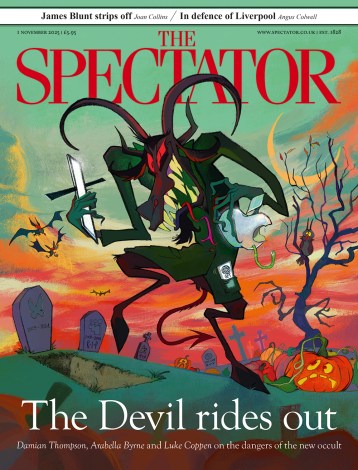Voltaire said it best: ‘Doubt is not a pleasant condition, but certainty is absurd.’ Investors seeking certainty — safety, in other words — are in for a shock: there is no longer any such thing.
How did we get into such a terrific mess? Rather than rehash the causes of the financial crisis and the current depression, there is a two-word answer: central banks. There was once a more innocent age when central banks performed a sole function: they acted as lenders of last resort to the banking system. To avert a banking panic, central banks would lend to solvent institutions, backed by solid collateral, in times of need. Note those key phrases: solvent institutions, solid collateral. They no longer really exist either. And somewhere along the line, over-mighty central banks succumbed to ‘mission creep’. In the words of veteran financial analyst Jim Grant, the US Federal Reserve, for example, now finds itself not just backstopping American banks, but also ‘steering, guiding, manipulating the economy, financial markets [and] the yield curve… it manipulates and pegs interest rates; it is all over the joint, doing what so signally failed in the old Eastern bloc.’
You can say the same thing of the Bank of England, the European Central Bank and the Bank of Japan. With their economies in recession or worse, and companies and households busily deleveraging (paying down debt), the world’s central banks have now gone all-out for quantitative easing, less politely known as money-printing. This experiment has never been tried before on such a scale, and it will not end well.
In a more innocent age, investors valued the safety and reliable income — the risk-free return — of government bonds. Today, government bonds issued by western industrial nations offer return-free risk. Five-year UK government bonds, or Gilts, currently yield 0.8 per cent. Since RPI inflation hovers at around 3 per cent and could plausibly go higher again, Gilts represent an opportunity to lock in a more-or-less guaranteed loss in real terms. So why on earth is anybody buying them? The answer lies in the phrase ‘financial repression’: the government and its regulatory agencies are effectively forcing pension funds and others to hold this rubbish. Another wheeze is for the Bank of England itself to buy Gilts in the secondary market from banks, as part of its quantitative easing programme. If this sounds like Zimbabwean economics, that’s because it is. Happily, there are alternatives. Instead of lending to bankrupt governments like our own, we can lend instead to creditor countries that are objectively more creditworthy. The irony of our times is that debt issued by these creditor countries offers a higher yield than the debt on offer from the clapped-out ones. (In an efficient market, this anomaly should not exist. It does exist, because the market is not efficient, investors tend to be sheep-like, and most fund managers are morons.) The Wealthy Nations Bond Fund, for example, which is not constrained by bond indices, invests exclusively in debt issued by creditworthy sovereign and quasi-sovereign issuers in countries like Singapore, Hong Kong, Qatar and the UAE, and currently yields over 5 per cent.
Since we’re living through a monumental debt crisis, it makes sense to be selective about making any investments in bonds. Interest rates have been in a 30-year downtrend. Since monetary policy rates have now reached zero, by definition they can go no lower. But they can go substantially higher — if, for example, at some point there is a buyers’ strike for Gilts, or US Treasuries, or German bunds. There is a time-honoured relationship between interest rates and bond prices: if interest rates go up, bond prices fall. So anybody buying Gilts or their like today, at their current pitiful yields, runs the risk of incurring a significant capital loss. They also run the risk of losing in currency terms, because a buyers’ strike for Gilts would be consistent with a run on sterling, as international investors abandon the last vestiges of hope for our moribund economy and our bank-savaged national finances.
Happily, there are alternatives in currency markets, too. The most creditworthy countries tend to have solid currencies into the bargain. My primary investment thesis is that global deleveraging is likely to last for perhaps another five or even ten years. In such an environment, poor countries (that’s us) will have to run trade surpluses to finance their debts, and to achieve that they will need to depreciate their currencies. The currency winners are likely to be the creditor countries (that’s Singapore, Qatar, etc). Some of these countries are pegged to the dollar. But some are not. For this reason, over the medium term I particularly favour currencies such as Canadianand Singapore dollars.
But the best currency of all is gold, because it has been sound money for thousands of years, carries no counterparty risk, is no one’s liability, is the one currency that cannot simply be printed on demand, and they’re not making any more of it. Gold is the perfect portfolio insurance not just against financial distress but against the threat of inflation and currency depreciation on a global scale. Gold and its markedly cheaper kissing cousin, -silver, sometimes seem volatile, but the point to remember is that it is the paper currency in which their value is expressed that is volatile; monetary metals themselves could not be more inert.
In short, investors fearing the worst from central banks whose sole policy objective is to protect shattered banks even if they risk destroying the rest of the economy and our savings and currencies in the process, should seek solace in real assets. Cash, bonds, Gilts and annuities all look like a bad bet. Productive real estate, harder currencies, defensive equities with meaningful yields, and gold and silver, all look like sensible portfolio insurance. Preserving one’s capital has never been more challenging. Nor has the need ever been more urgent.






Comments